You Can Get to These Eco-Friendly Stadiums by Trail
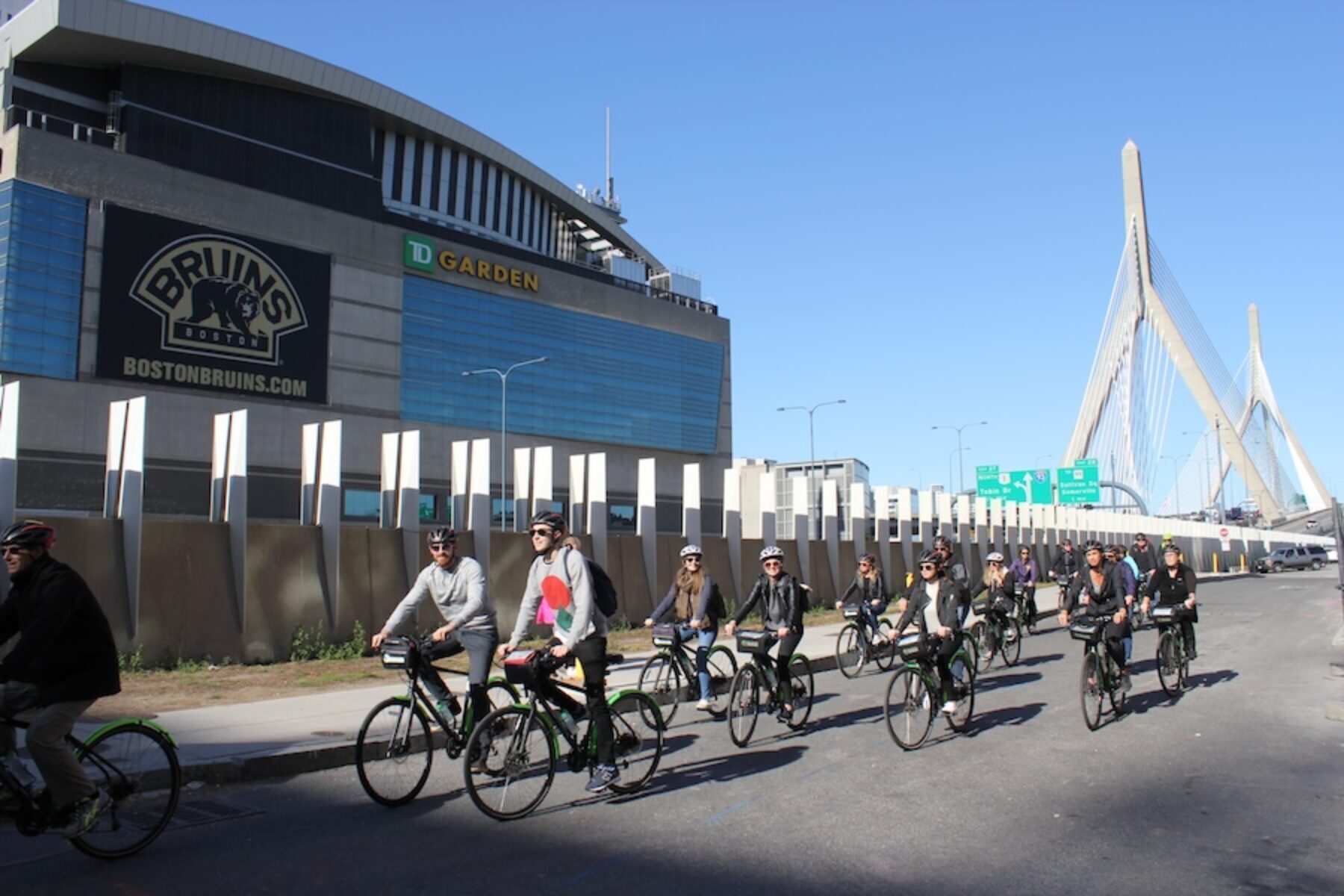
There’s no denying that Americans love a good game, with more than 150 million combined attendees annually at major league baseball, football, basketball, soccer and hockey games. With going to sports events being such a popular pastime, venues that embrace sustainability can serve as important role models for positive change. Here we’ve spotlighted several members of the Green Sports Alliance, a leader in fostering environmental stewardship in sports. Not only are these trailside stadiums eco-friendly champs, but they also encourage fans to reduce their carbon footprint by getting to the games via trails and public transportation—a winning formula.
Levi’s Stadium via San Tomas Aquino Creek Trail (Santa Clara, California)
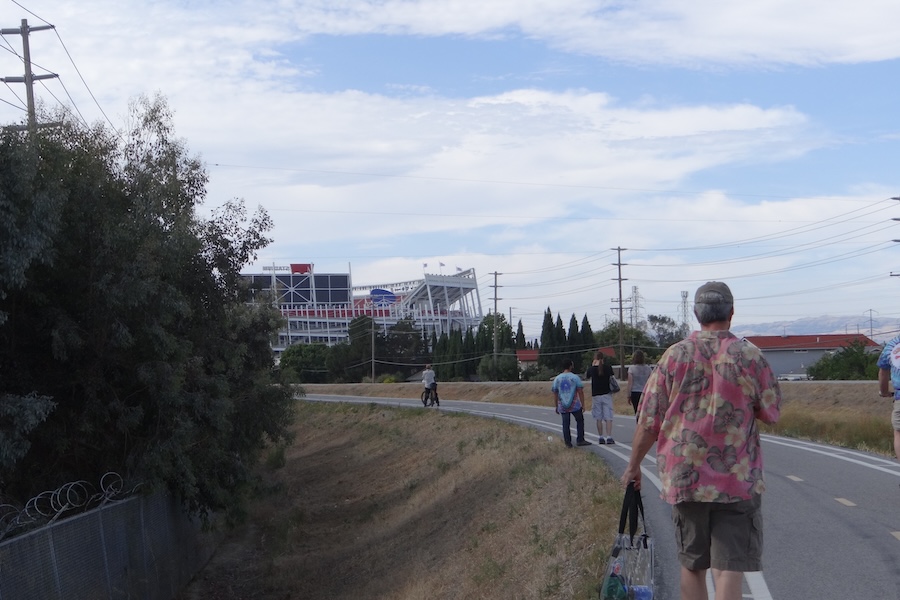
Fans of the San Francisco 49ers have struck gold with Levi’s Stadium, a Gold-certified LEED facility using solar panels, recycled water and other sustainability features. In addition to housing a literal “green roof” that produces crops of vegetables, herbs and leafy greens for use at stadium events, the venue is committed to using local suppliers with the majority of the stadium’s food coming from within a 150-mile radius.
Those getting to a game on foot or wheels can hop on the San Tomas Aquino Creek Trail, a nearly 5-mile paved pathway that leads right to the stadium’s doorstep and taps into the vast Bay Area Trails Collaborative network connecting communities by trail access across the region. During stadium events, the Silicon Valley Bicycle Coalition even offers a free bike valet service. Other non-driving options to get there include the VTA light rail, Amtrak’s Capitol Corridor line, ACE trains and Caltrain commuter routes.
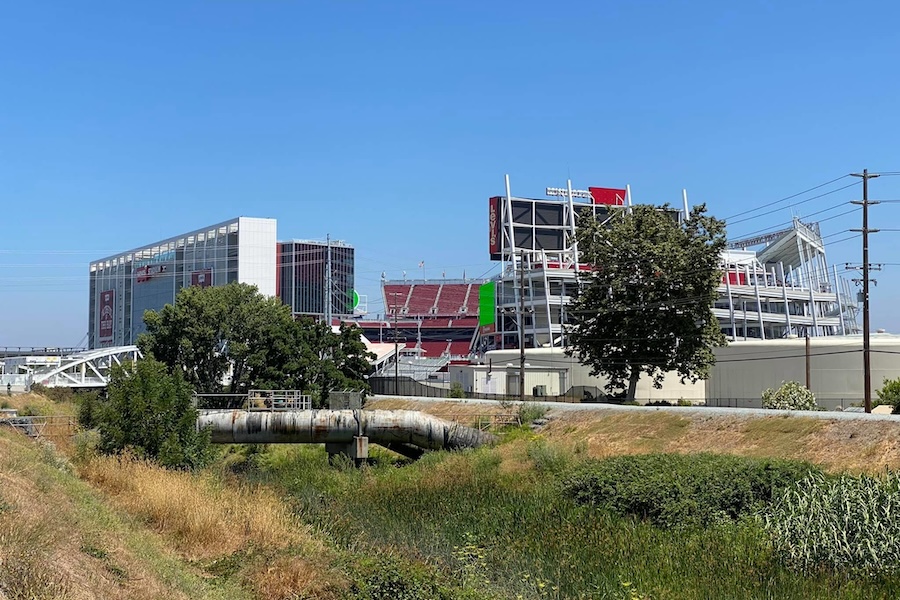
Mercedes-Benz Stadium via PATH Foundation Trails + Atlanta BeltLine (Atlanta, Georgia)
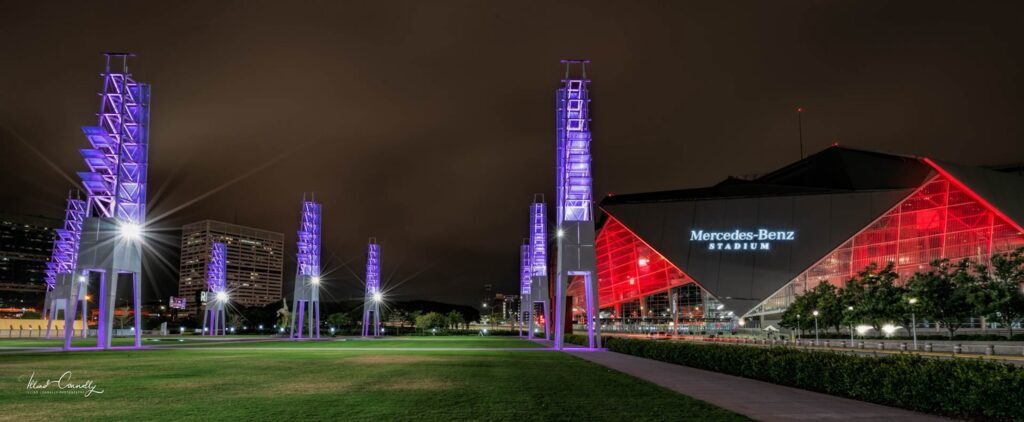
The first thing you might notice about Atlanta’s Mercedes-Benz Stadium is its unusual design. Its retractable roof features eight triangular petals that allow the roof to open and close like a camera aperture. Other innovative elements of the LEED Platinum-certified facility include its solar power usage, urban garden, low-flow plumbing and a rainwater cistern that feeds its cooling and irrigation systems.
Situated downtown, the trailside stadium—home to the National Football League’s Atlanta Falcons and Major League Soccer’s Atlanta United—is easy to reach without a car with two MARTA train stations located nearby. Additional alternative transportation options include the network of PATH Foundation trails throughout metro Atlanta and the Westside BeltLine Connector just to the north. The latter is a nearly 2-mile paved pathway that’s part of the developing Atlanta BeltLine project encircling the city. Around the stadium and at the adjacent convention center, 250 bike racks are available, and Propel ATL also offers a complimentary bike valet program at games.
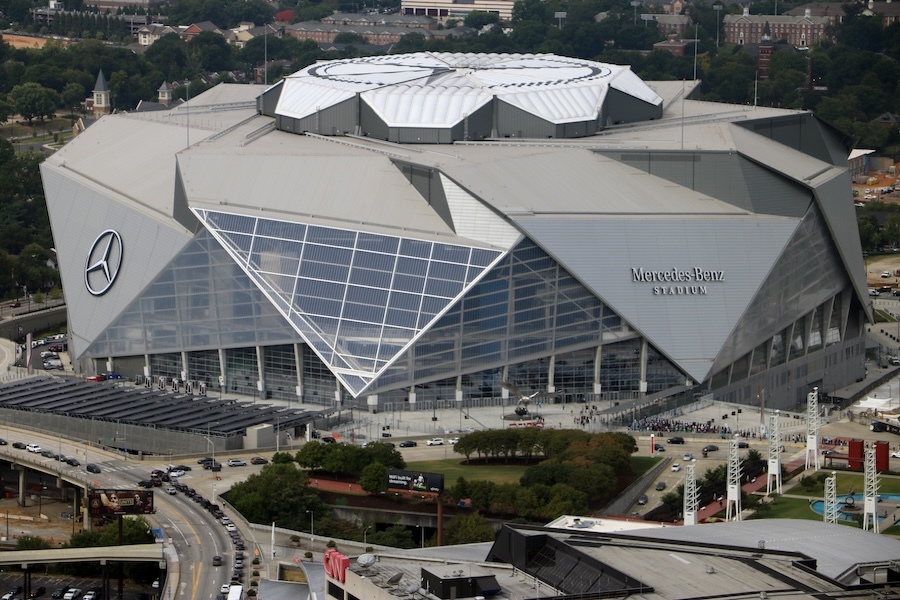
U.S. Bank Stadium and Target Field via Hiawatha LRT Trail + Cedar Lake Trail (Minneapolis, Minnesota)
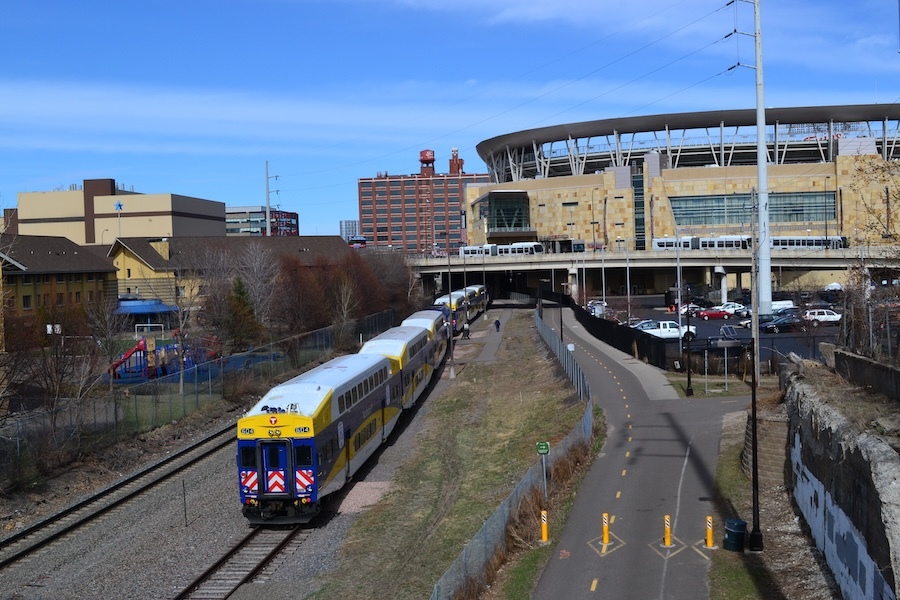
It seems only fitting that the Twin Cities should be home to a pair of top tier sports venues making strides in sustainability. U.S. Bank Stadium, home to football’s Minnesota Vikings and the first-ever “zero-waste Super Bowl,” and Target Field, which serves baseball’s Minnesota Twins and bills itself as the “greenest ballpark in America”—are just a mile apart.
Take Metro Transit to the trailside stadium and the ballpark, or take the Hiawatha LRT Trail that parallels the tracks nearly 5 miles between the stadium and Minnehaha Regional Park. You can also combine the two as all Metro Transit trains and buses include bicycle racks. Game goers will also hit a homerun using the Cedar Lake Trail, which runs right by Target Field and links downtown, the city’s western suburbs and a handful of other trails that further its reach. Upon arrival, over 180 bike racks are available near the stadium’s gates, and hundreds of bike parking spaces are available at the ballpark and its surrounding blocks.
In addition, Minneapolis’ elaborate network of enclosed pedestrian Skyways—spanning 80 city blocks and reaching both U.S. Bank Stadium and Target Field—make it easy to avoid traffic and get around during the cold Midwestern winters.
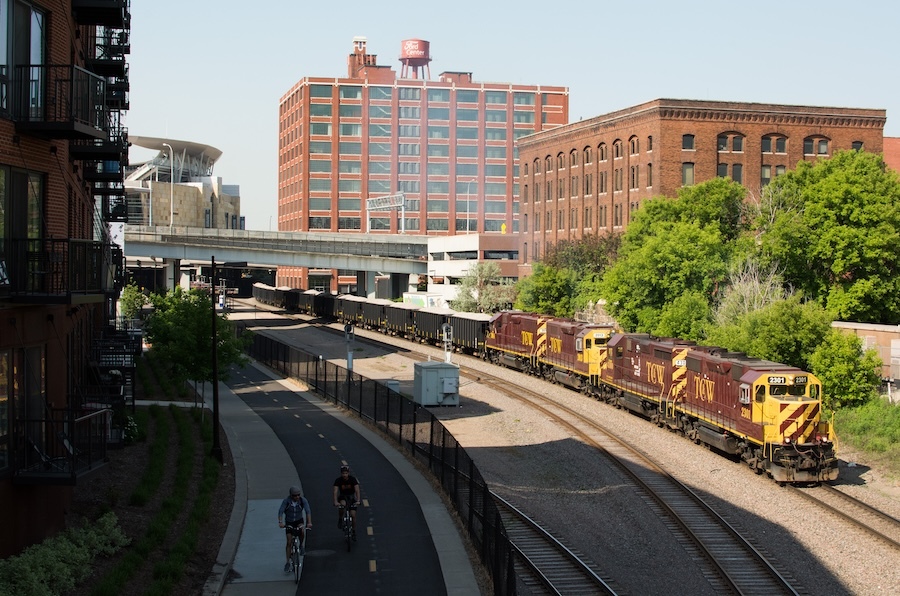
TD Garden via Charles River Bike Path (Boston, Massachusetts)
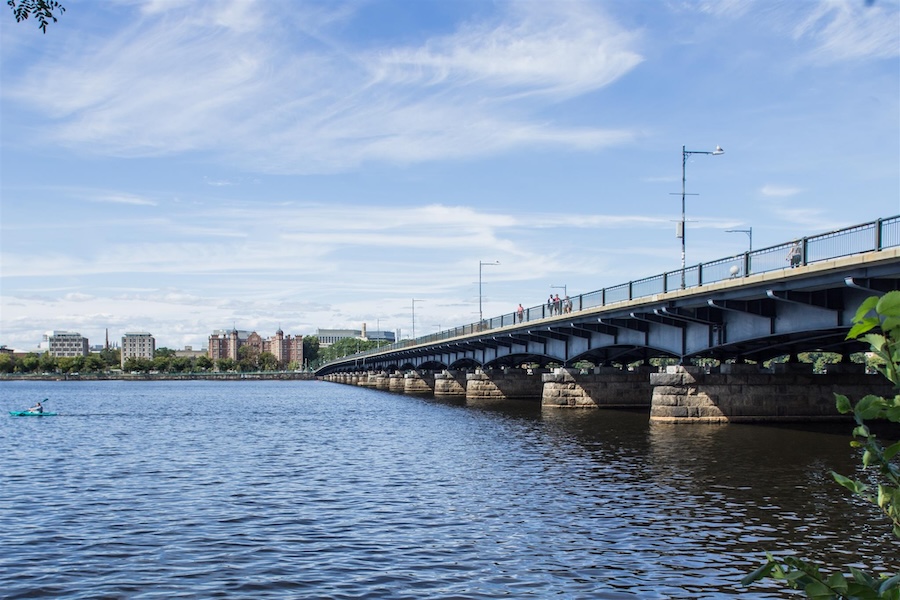
While hockey’s Boston Bruins may be celebrating their 100th anniversary this year, the team’s venue at TD Garden is anything but old-fashioned. The arena, which is also home to basketball’s Boston Celtics, uses forward-thinking strategies to reduce its environmental footprint, including installing energy-efficient lighting, reducing waste, promoting recycling and applying water-conservation practices.
Arriving at the arena is a slam dunk using the Charles River Bike Path, spanning more than 20 paved miles along both sides of its scenic namesake river, and ending about a half-mile from TD Garden. Making a bike commute to the game even easier, Bluebikes, Boston’s bike-share system, has three stations within just a block or two of the venue. Additionally, sports fans can take the MBTA commuter rail and get off at the adjacent North Station stop.
Green Sports Alliance is a 2024 Celebrate Trails Day sponsor
Learn more about Celebrate Trails Day, RTC’s annual spring celebration of America’s trails, and plan to participate on the fourth Saturday of April for a chance to win a prize pack.
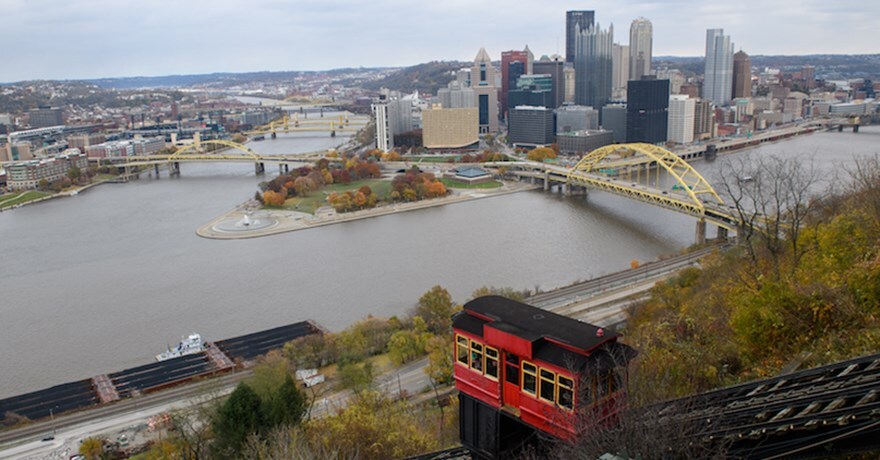

Donate
Everyone deserves access to safe ways to walk, bike, and be active outdoors.